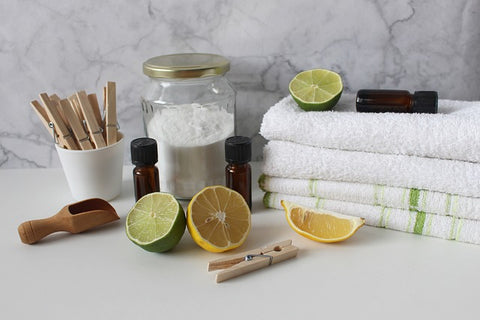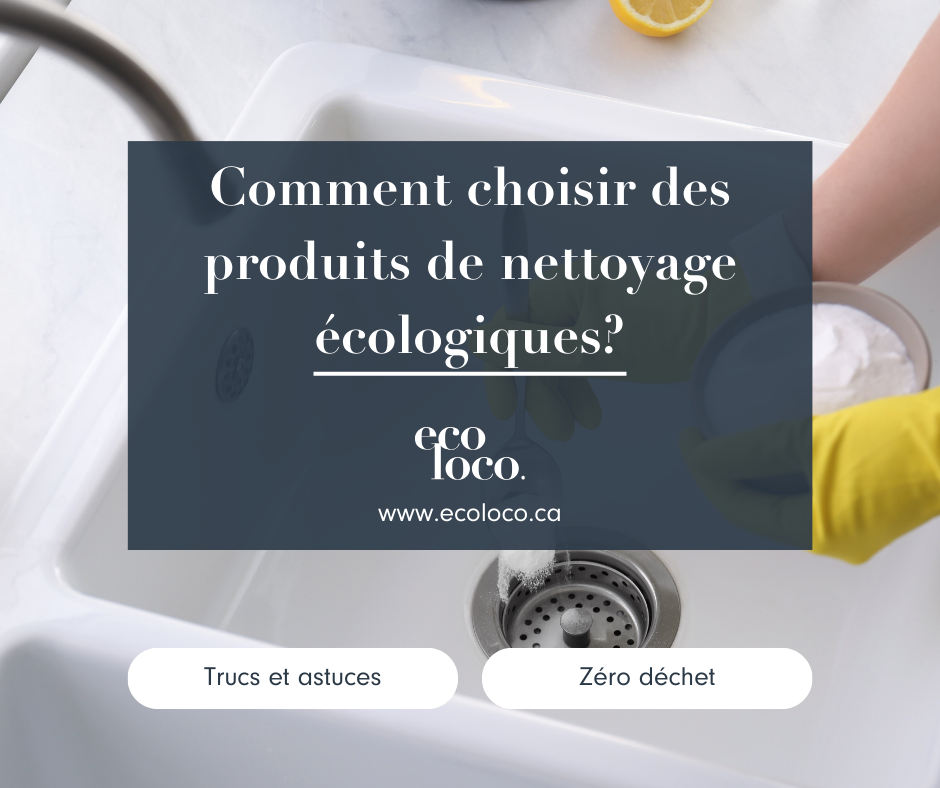Choosing eco-friendly cleaning products can be a challenge, but that doesn't mean it has to be boring! With a touch of humor, let's explore how to select these products while preserving our planet.
First of all, it's important to know what to avoid. Traditional cleaning products often contain chemicals as complicated to pronounce as the ingredients of a magic potion! Start by checking your product's list of ingredients. However,there are no regulations requiring companies to display the list of ingredients on their household products. If you can't find it, visit the manufacturer's website or contact them by e-mail or telephone. A transparent company won't hesitate to share its contact details and its list of ingredients.
Next, check the ingredient names to understand their use in the product. You can use the Environmental Working Group website to check the hazardousness of each ingredient, or the Le Décodeur application from Éditions Protégez-Vous (free and paid features). For example, methylisothiazolinone is a preservative commonly used in personal care products such as shampoos, liquid hand soap and dishwashing detergents. However, this ingredient is a major allergen that causes eczema and itching in many people.
Our best advice? Look for products with ingredient lists shorter than a J.R.R. Tolkien book. The best choices are those containing simple, natural ingredients like vinegar, baking soda and lemon. Not only do they clean well, but they also give you an excuse to tell your friends that your house smells like a fruit salad!
It's true that fragrances and dyes in products make cleaning more appealing, but these are both unnecessary ingredients for cleaning and represent a risk to health (allergies, cancer) and the environment (pollution). If for you a clean house means a house that smells good, use an essential oil diffuser during your cleaning chore.
When looking for eco-friendly products, keep an eye out for certifications. Look for certifications such as Ecologo, Ecocert, the European Ecolabel or the USDA Organic label. These certifications guarantee that products meet strict standards and contain no suspect ingredients.
You can also check whether your products are biodegradable. There are several logos, so it's important to check the certifier's verification process before believing that the product is safe for the environment. One of the most widely recognized tests is the OECD 301D or E test.
If you prefer a more artisanal approach, you can make your own eco-friendly cleaners at home. It's like cooking, but instead of preparing a meal, you prepare a surface cleaner. Most recipes are so easy, even your cat could make them. Here's our favorite (and easiest!!) recipe:
All-purpose basic cleaner: Mix 1 part vinegar and 4 parts water in a spray bottle.
Vinegar smell makes you cringe? Infuse citrus peels in a jar of vinegar for 2 weeks before using it in your household products.
Finally, when choosing cleaning products, don't forget the packaging. Opt for bulk versions, or look for recyclable or reusable packaging. After all, you want to clean the planet, not pollute it further with unnecessary packaging.
In conclusion, choosing eco-friendly cleaning products can be fun and rewarding. By avoiding toxic chemicals, seeking out natural ingredients and choosing eco-friendly options, you're helping to preserve our planet while keeping your home clean and safe. If you have any doubts or questions, never hesitate to contact the manufacturer of your product, because we have a right to know if what we're buying is good for us and for the environment.
Ecologically yours,



0 comments